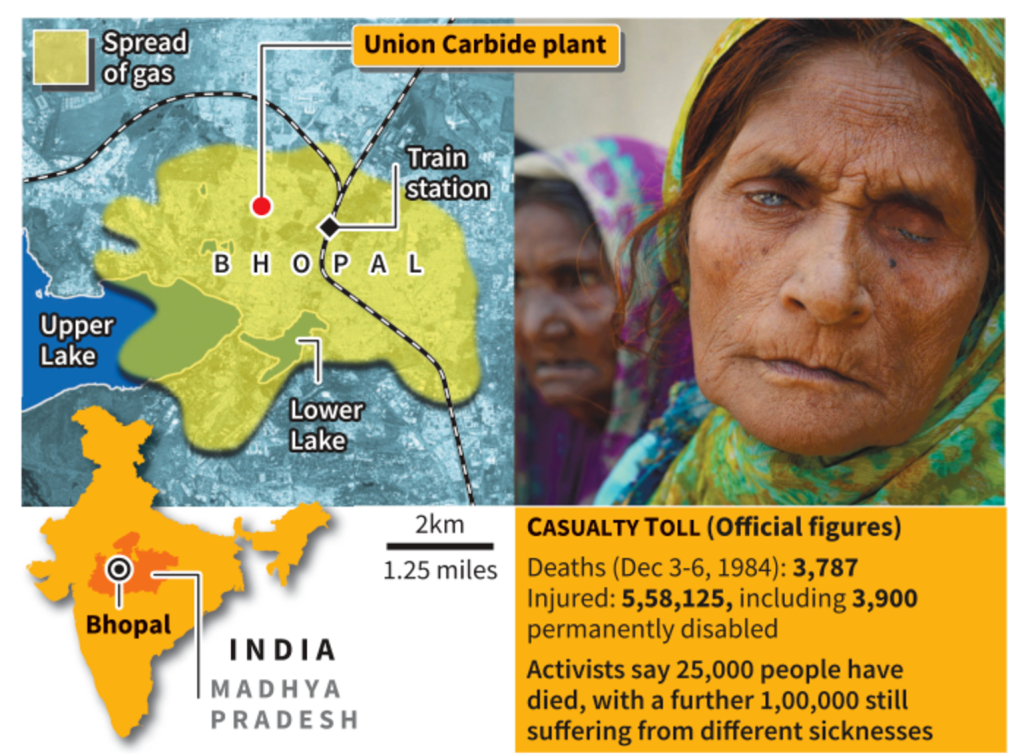Context: Toxic waste weighing 337 tonnes from the defunct Union Carbide factory has been completely incinerated at a private waste treatment facility in Pithampur industrial area, Dhar district in Madhya Pradesh. The waste was moved to the treatment facility in early 2025, more than 40 years after the Bhopal gas tragedy.

Bhopal Gas Tragedy (1984)
What Happened?
Occurred on 2–3 December 1984 at the Union Carbide India Limited (UCIL) pesticide plant in Bhopal, Madhya Pradesh.
The worst industrial disaster in history.
Nearly 40 metric tons of methyl isocyanate (MIC) gas leaked.
Immediate death toll: Over 5,000 people.
Thousands more suffered long-term health problems and disabilities.
Toxins Released in the Disaster
1. Methyl Isocyanate (MIC)
Highly toxic gas responsible for the immediate casualties and health effects.
2. Other Toxic Chemicals
Persistent Organic Pollutants (POPs) such as:
Hexachlorobutadiene
Chloroform
Carbon tetrachloride
Trichlorobenzene
Heavy Metals including:
Mercury
Chromium
Copper
Nickel
Lead
Understanding Persistent Organic Pollutants (POPs)
POPs are organic compounds that degrade very slowly and persist in the environment.
They accumulate in fat tissues of humans and wildlife.
Cause serious health issues like:
Cancer
Allergies
Nervous system damage
Reproductive disorders
Immune system disruption
Governed internationally by the Stockholm Convention on POPs (2001; effective 2004).
India is a signatory.
Heavy Metals Overview
Metals with high density (at least 5 times that of water).
Toxic, persistent, bioaccumulate in organisms, causing:
Cellular damage
Organ failure
Carcinogenic effects
Common Examples & Effects:
Mercury: Organ damage even at low doses.
Lead: Brain impairment, developmental issues, disrupts photosynthesis in plants.
Arsenic: Carcinogenic.
Chromium: Carcinogenic, weakens immune system.
Nickel: Carcinogenic.
